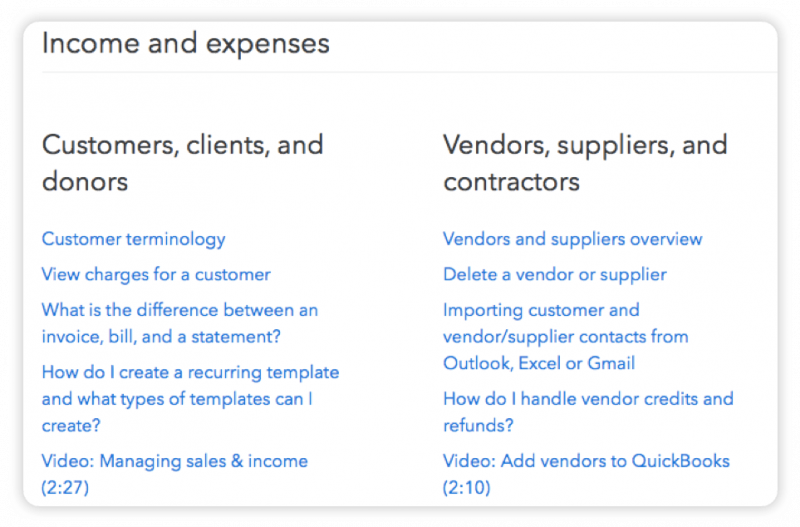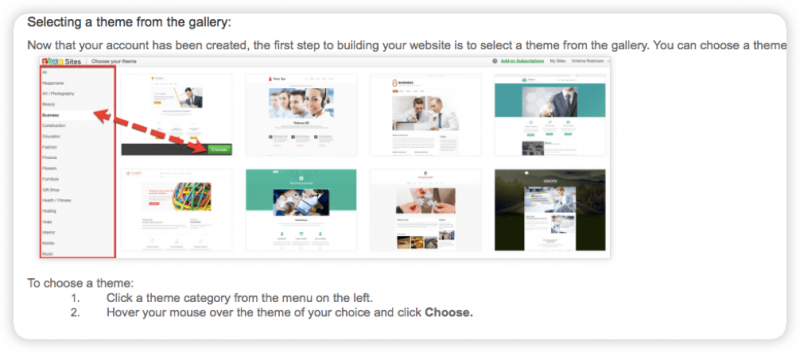- HOME
- Quick Reads
- Creating Support Pages that Support Your Sales
Creating Support Pages that Support Your Sales
- 6 Mins Read
- Posted on September 26, 2019
- Last Updated on December 2, 2025
- By Natalie

It’s a collection of pages with many names: “Support Center,” “Help Center,” “Contact Us,” “Customer Care,” “Customer Service”—even “Documentation.” And it outclasses your FAQ page insofar as it makes room for virtually every question a customer has asked—or may ask.
Your support pages are where your customers will go when they’re confused about a feature on your product, or when a feature isn’t working for them, or when they want to know about your returns policy, or they can’t log into their account… the list goes on.
If designed well, your support homepage directs customers intuitively to the answers to whatever range of questions they might have. It teaches them how to pose their questions more effectively, and it improves their overall experience with both your website and your product (or service), since it trains them to find the answers to their questions rather than picking up the phone and calling your business. (That’s a win-win for everybody).
Other reasons it’s worth building a skillful set of support pages include:
Customers prefer to help themselves
According to an Amdocs survey, 75% of customers prefer an online self-service option to a call center. What’s more, “91 percent say they would use a single, online knowledge base if it were available and tailored to their needs.” If you consider your own experience, this makes sense: The last thing you want to do when you have a question about a product is call the company’s service center and sit through a series of menu options telling you which buttons to press.
Granted, some people will immediately pick up the phone to call support when they’ve hit a roadblock: That’s why real-time support centers will never be obsolete. But plenty more customers want to learn on their own, fix the problems or find the answers to their questions themselves, and feel empowered by their capacity to do so. A self-service support center will make it easier for them to love both your product and your website all the more.
It educates and supports your team
Depending on the complexity of your product or service, it’s possible that members of your support team can work with you for years and still not have the answers to every question that comes in. Having a complete knowledge base on your site isn’t just advantageous for your customers; it’s also advantageous for your team—both for their own reference and for their jobs as reps.
The better the documentation on your support pages, the more quickly your team members will be able to answer the questions they’re presented with. What’s more, having support pages gives your team consistency in their answers. When your entire support team answers the same question in the same way, according to the content in your knowledge base, it ensures consistency in how your customers approach your products and in the language they use to talk about them.
It helps you build better products and offer better services
Making yourself do the arduous work of creating a knowledge base means potentially answering a lot of questions and explaining a lot of steps, procedures, and concepts.
As you write out the answers to these questions, you’ll likely notice the very problems, pain points, and imperfections that your customers experience with your product. These observations may cause you to pick up your product again and improve it in the next iteration.
What Content Should I Include in My Support Pages?
Whereas your FAQ only answers the questions that your business hears frequently, your support pages will answer the questions it hears frequently, infrequently… and even rarely. In other words, they’re the most comprehensive archive of information available to users about your product or service. This means…
Explain everything
You’d have to work really hard to over-explain anything in a knowledge base. Approach your support documents as though every customer who reads them is a brand new user of your product. Cut the jargon, and don’t assume that your customers know what you’re talking about when you use industry or product terminology.
To that end, consider getting your whole team involved in the process. Ask your technical experts how they explain certain terms to customers who aren’t specialized or technically-minded, and ask your customer service team how they break down complex procedures over the phone. What does the list of customer questions they’ve answered this year look like? If your team isn’t doing so already, have them start writing the questions down as they get them.
QuickBooks is an excellent example of the “explain everything” strategy. Their support page doesn’t just explain how to use their software; it also generously breaks down accounting concepts for their customers (an invaluable gift to small business owners trying to perform many roles at once):

Other means of making your support documents easy on your reader include the use of simple titles, big headers, bold text, bullet points, tables, infographics, and videos (we’ll get to these shortly).
Incorporate your FAQs
If you have an FAQ… make use of it! Indeed, many businesses include a “Quick links” or “Popular topics” section on their support pages, which is essentially a product-specific or category-specific FAQ.
In other words, if you’ve written your FAQ page, you’ve already got the foundations for your support page.
“Incorporate your FAQs” is another way of recommending that you make all your knowledge base copy reusable and interlinked. For example, if one of your support pages explains a product feature in depth, link to that page any time the feature comes up in another question or answer—whether in your FAQs or elsewhere.
Proceeding this way will ensure that if any of your answers ever changes, you won’t have to rewrite every article—you’ll only have to update one of them.
Go multimedia
We discuss the importance of multimedia often on Zoho Academy. Your support pages are probably the most important places to make use of it.
We all take in and process information differently; and if you want your support pages to cater to the broadest range of customers possible, you have to account for this fact. Wherever you can, supplement text with images, diagrams, and videos.
Videos in particular are invaluable when it comes to walking your customers through more complex processes or topics.
At Zoho, we offer an abundance of screen shots and video tutorials on our support pages to take our customers step-by-step through various procedures in our applications:

Ask for Feedback on Your Support Content
Let your customers tell you where your language is too vague, or which screenshots don’t help clarify the solution. Using this feedback, you can return to the drawing board at regular intervals and clarify those aspects of your support pages that customers find… well, unsupportive. You’ll also be able to use customer comments—along with analytics about the terms visitors are searching for and not finding—as starting points for additional questions to explicitly answer in your support documentation.
Remember: Patience is a Support Page Virtue
Walk slowly enough through your own product or service processes to fully understand all possible user pain points. Some of your support pages will originate with these pain points. Others will surface through customer support tickets and emails.
If you have multiple employees creating support page content, consider setting guidelines for language and tone (like MailChimp’s) to ensure consistency across your support pages. Make it sound like the same person wrote every page of your support documentation, using the same terminology, and maybe even the same sense of humor—even if that isn’t the case.
The more time and effort you put into building a solid web of support pages, the less time you’ll be spending, in the long run, on customer support. And that time will pay off doubly, because your customers’ faith in your overall capacity to preempt and answer their questions will soar.